In this article, we are going to talk about droopy eyes in toddlers. From the symptoms and signs of different high-fever diseases that come with eye disorders to the reason behind and of course the treatment.
Your eyelids play a key role in protecting your eye, without eyelids, your eyes wouldn’t have any kind of protection from trauma and things that can hurt your eyes. Besides eye diseases, there are a lot of different infections and illnesses that cause eyelid problems that people haven’t heard of and because of that, we decided to write an all-inclusive article about all the diseases that can cause different sorts of eye disorders.
You might have been affected by one of these diseases at least once in your lifetime and by reading this article you may notice that the eye problem that you had back in the day, was because of a disease. The reason that we chose to talk about toddlers specifically, is that these diseases usually occur in the early stages of people’s life.
So, sit back and read carefully.
Ps: this article is absolutely based on evidence and knowledge provided by legit health magazines & websites.
Ptosis and Why It Occurs
Blepharoptosis aka ptosis is a condition where the upper eyelid droops, this condition is usually not related to medical problems since it’s just because of the weakness of eyelid muscles.
When you have droopy eyelids, your range of vision is limited.
Some people are born with ptosis, this disease can also be acquired later in life.
Besides congenital ptosis, there are other causes too.

Ptosis and Why It Occurs
Here are some different causes of ptosis:
Injury: a serious injury to eyelids can mess up the whole nervous system.
Eyelid tumors: Eyelid tumors are abnormal growths around the eyes (which are also very similar to skin tumors) that can also cause ptosis.
Aging: ageing/aging is the process of getting older which can cause ptosis.
Allergy: Eye allergies can also lead to ptosis.
Common Symptoms
Watery eyes: excessive water discharge from the eyes is one of the most common symptoms of droopy eyes which is mainly because of sagginess of the eyelids.
Since your eyelid is drooping away from the eye, your tears start to flow over your eyelids because you can’t control them. This might block your eyesight but it isn’t painful.
This underlying medical condition is also known as excessive tearing.
Restricted vision: droopy eyelids can either block or restrict the patient’s vision, considering that blinking might be hard or uncomfortable for them.
Fatigue of eyelid: another symptom is the fatigue of eyelid(s), if one or both of the eyelids, especially the upper one is fatigued, that can also be a sign.
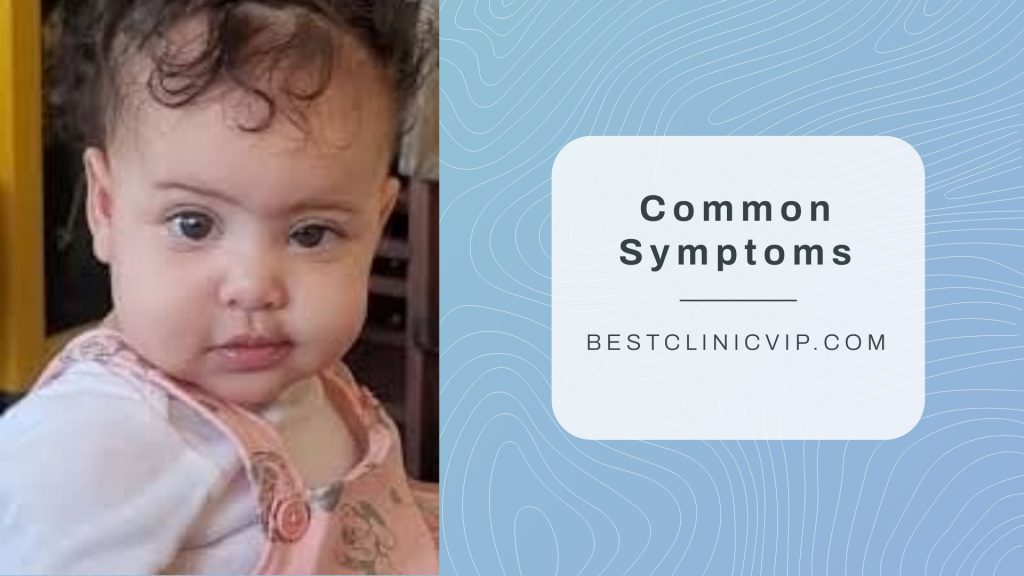
Common Symptoms
Roseola
Let’s talk about another contagious disease that also makes eyelids droop.
Roseola is a viral infection that is common among children who are under 2.
Roseola is way more common and contagious than ptosis. Also, the majority of people have been affected by roseola at least once in their childhood but for ptosis in most cases, babies are born with it since birth, and that is why ptosis is more known as a congenital disease rather than an infection that can be passed from a person to another person.
Now we have to talk about the signs and symptoms.
The most obvious signs of Roseola are fever and rash and the other symptoms are usually pink eye and droopy eyelid followed by sore throat, runny nose, or even diarrhea and vomiting.
Roseola is really rare in adults since most people are immune to it. Most children over 2 are also immune to Roseola.
Most babies recover from Roseola in a week or less.
Your body builds immunity to Roseola right after you recover from it and that immunity stays forever.
According to NIH (aka the National Library of Medicine), the treatment for Roseola is pretty simple:
“There is no specific treatment for roseola infantum. The majority of cases of roseola infantum are mild and self-limited. Treatment is supportive with rest, maintaining fluid intake and antipyretics such as acetaminophen or ibuprofen to control the fever.”
Roseola isn’t such a serious and life-threatening disease but it might come with long-lasting effects.
Keep in mind that these effects are very rare.
The Medbroadcast.com says:
“Roseola in adults can cause severe complications including meningoencephalitis, an infection of the brain tissue and its surrounding layers, or hepatitis, an inflammation of the liver.”
Overall, you must pay attention to the symptoms and visit a doctor if needed.
droopy eyelids treatment options
Kawasaki Disease
Kawasaki is also a disease that primarily strikes children, but the difference between Kawasaki and Ptosis and Roseola is that Kawasaki is more of a blood vessel problem which is downstream of a certain heart condition rather than an eye disorder or eyelid problem like ptosis.
Mucocutaneous lymph node syndrome (Kawasaki) is a systemic vasculitis that affects the coronary arteries that carry blood to the heart muscle.
In simple words, this disease makes the immune system attack the blood vessels which leads to their inflammation.
Kawasaki is usually treatable, however, if the patient doesn’t seek medical help in the early stages, they might face long-term effects.
The long-lasting problems that a child might carry over into their adulthood if Kawasaki isn’t treated in the first place, are serious heart problems like abnormal heartbeat rhythm.
“Scientists haven’t found an exact cause of Kawasaki disease.”
This is what Dr. Poonam Sachdev the medical reviewer of the WebMD health website has said about the cause of Kawasaki disease.
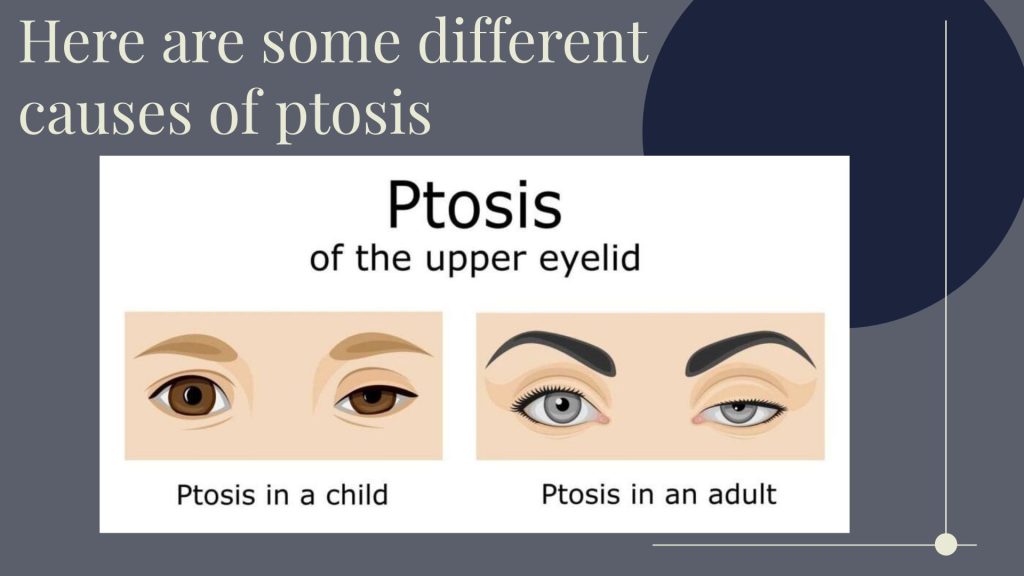
Here are some different causes of ptosis
The doctor also said:
“Kawasaki might be linked to genes, viruses, bacteria, and other things in the world around a child, such as chemicals and irritants.
The disease probably isn’t contagious, but it sometimes happens in clusters in a community. Kids are more likely to get it in the winter and spring.”
Here are the symptoms of Kawasaki:
- High fever (for more than 5 days)
- Rash (often on the chest, belly, legs, back, and genital area)
- Dry lips
- Sore throat
- Red or pink eyes
- Swelling of hands and feet (palms of the hands and soles of the feet)
- Red bumps on the tongue
- Swollen lymph nodes in the neck
How is Kawasaki treated?
Well, we refer to the kidshealth.org website:
intravenous (IV) dose of immune globulin (IVIG): These antibodies (proteins) help fight infections. IVIG treatment also lowers the risk of coronary artery aneurysms.
- high-dose aspirin to treat inflammation. In some children, IVIG may not work and doctors give steroids instead. Steroids can help prevent coronary aneurysms.
It’s very important for children on high-dose aspirin to get the annual flu vaccine to help prevent this viral illness. That’s because there’s a small risk of a rare condition called Reye syndrome in children who take aspirin during a viral illness.”
The reason behind mentioning Kawasaki in this article is that in some cases, the main cause of eye disorders in children isn’t related to any sort of eye or eyelid muscle problem and the real cause is actually a temporary disease that comes with side-effects like droopy eyelid.
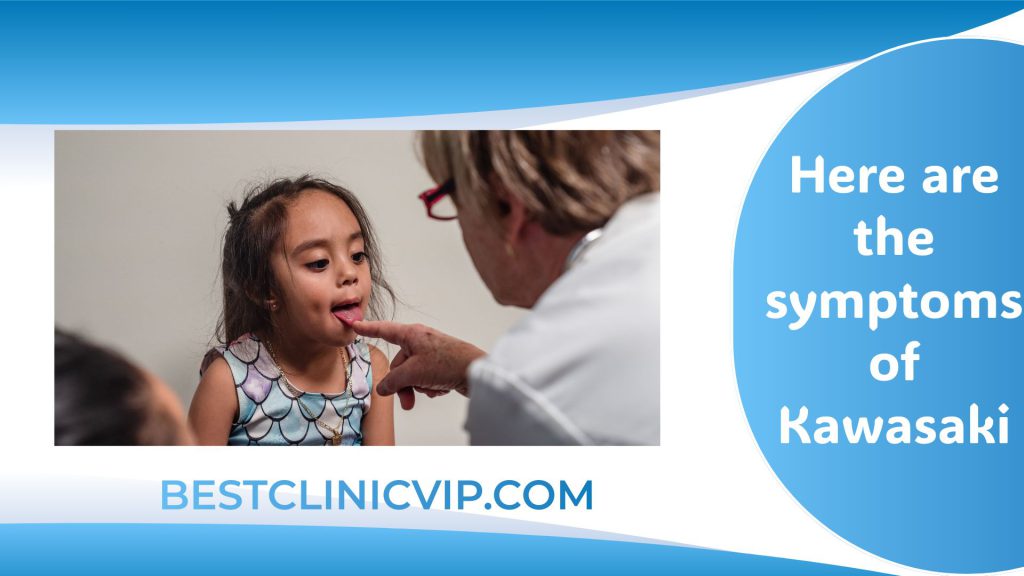
Here are the symptoms of Kawasaki
Blepharitis
Blepharitis is a common eye disease where the eyelids become swollen and itchy.
In simpler words, Blepharitis is the inflammation of the eyelids and that’s why some websites refer to it as eyelid inflammation rather than its medical name “Blepharitis”.
Mostly, the main cause of Blepharitis is bacteria or a skin condition, and it normally co-occurs with other allergies.
Other causes are typically dandruff and the infection or irritation of the oil glands in the eyelids.
This chronic eyelid condition isn’t contagious and doesn’t have any long-term effects and because of that, it won’t damage your eyesight permanently. In the worst scenario, Blepharitis might cause discomfort.
The best you can do to prevent Blepharitis is to keep your eyelids, skin, scalp, hair, and even hands clean. So, take hygiene seriously.
As I said before, the symptoms of Blepharitis are itching and swelling of the eyelids which comes with red eyes and sensitivity to light simultaneously.
The treatment is pretty simple and it is all based on hygiene just like the prevention part.
You have to take care of your hair, skin, and scalp and that’s it.
Whether it is with a normal but consistent cleaning and washing routine or a more serious route of treatment like applying special shampoo or ointments followed by using artificial tears and massaging.
Eyelid Disorders
Just like every other disorder, there are loads of different diseases and infections as subsets.
And eyelid disorder is one of them because every person can have an eye problem with a different cause.
Ptosis and Blepharitis are the most famous eyelid disorders since their main symptom is a droopy or loose eyelid.
We are going to mention other eyelid disorders and talk briefly about the more common ones.
The other disorders are Ectropion, Entropion, Dermatochalasis, Stye, Chalazion, Blepharospasm, Blepharochalasis, Xanthelasma, and Meibomianitis.
Ectropion happens when the muscles of the lower eyelid are loose and weak which makes the eyelid sag and causes your eyelid to turn outward.
This condition is very uncomfortable and irritating because your eyelids can’t close completely which leads to dryness and redness of the eyes.
Entropion is when the lower eyelid turns inward and eyelids start to rub against the surface, Entropion might cause your eyes to tear up more than normal.
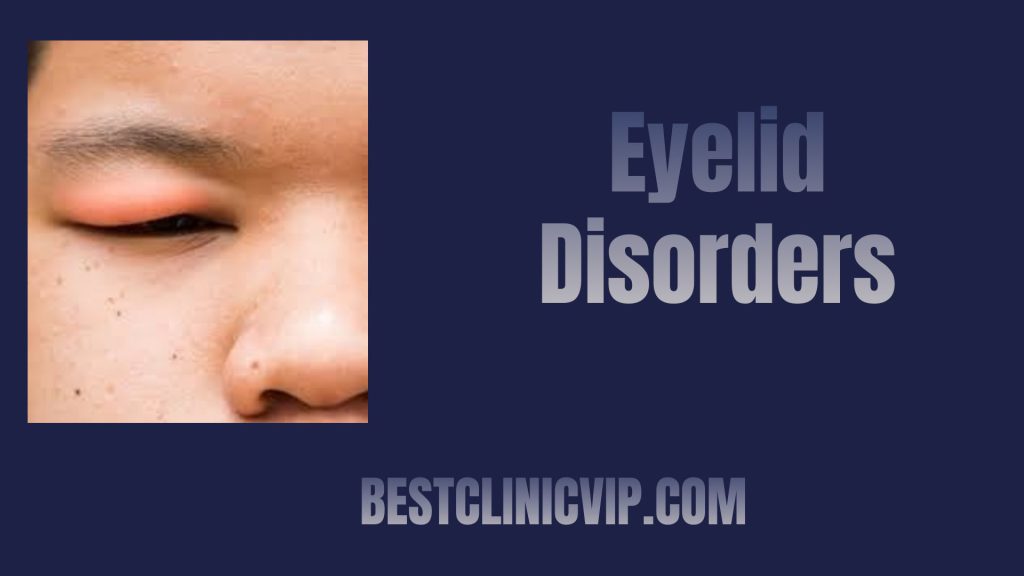
Eyelid Disorders
When To Visit a Doctor
Visiting a doctor is never a bad idea, especially if you have doubts or if you are feeling different from usual.
With that being said, always try to seek medical help as soon as possible so that you can prevent the disease or recover before when it’s too late.
Keep in mind that we are just talking about prevention and a normal visit which isn’t a big deal.
So don’t be paranoid and don’t stress it as long as you are feeling okay.
In order to make this clearer, I’ll bring up a few lines about this subject from the Healthline website.
“Some eyelid disorders will go away with time or once an infection clears, but many can lead to serious chronic disorders if you don’t get treatment for them. These disorders include dry eye, astigmatism, or even vision loss. Contact an optometrist or ophthalmologist if you have a problem with your eyelids.”
Treatment
Throughout the article, we talked about the treatment of some of the diseases but we decided to keep the best treatment which comes with consequences for the end of the article.
If you are looking for the best treatment for droopy eyelids the best option is definitely the one that your doctor says.
The reason behind that is the differences between the cases, each person might have a different disease that needs its very own treatment.
But, If you are looking for a short answer from us, we have to tell you that the best treatment for most eye disorders like ptosis is surgery.
For most patients, surgery has been the best treatment with the best possible outcomes mainly because it permanently fixes the problem when the problem isn’t related to an infection or a disease.
It’s been scientifically proven that surgery usually fixes all the problems for good.
The good news is that the surgery is painless and safe and that’s why all the doctors suggest eyelid surgery.
Don’t forget to book an appointment with your ophthalmologist before you look for surgery, so you can discuss specific treatment options.
If you’ve had an eyelid surgery before, share your experience with us in the comment section.

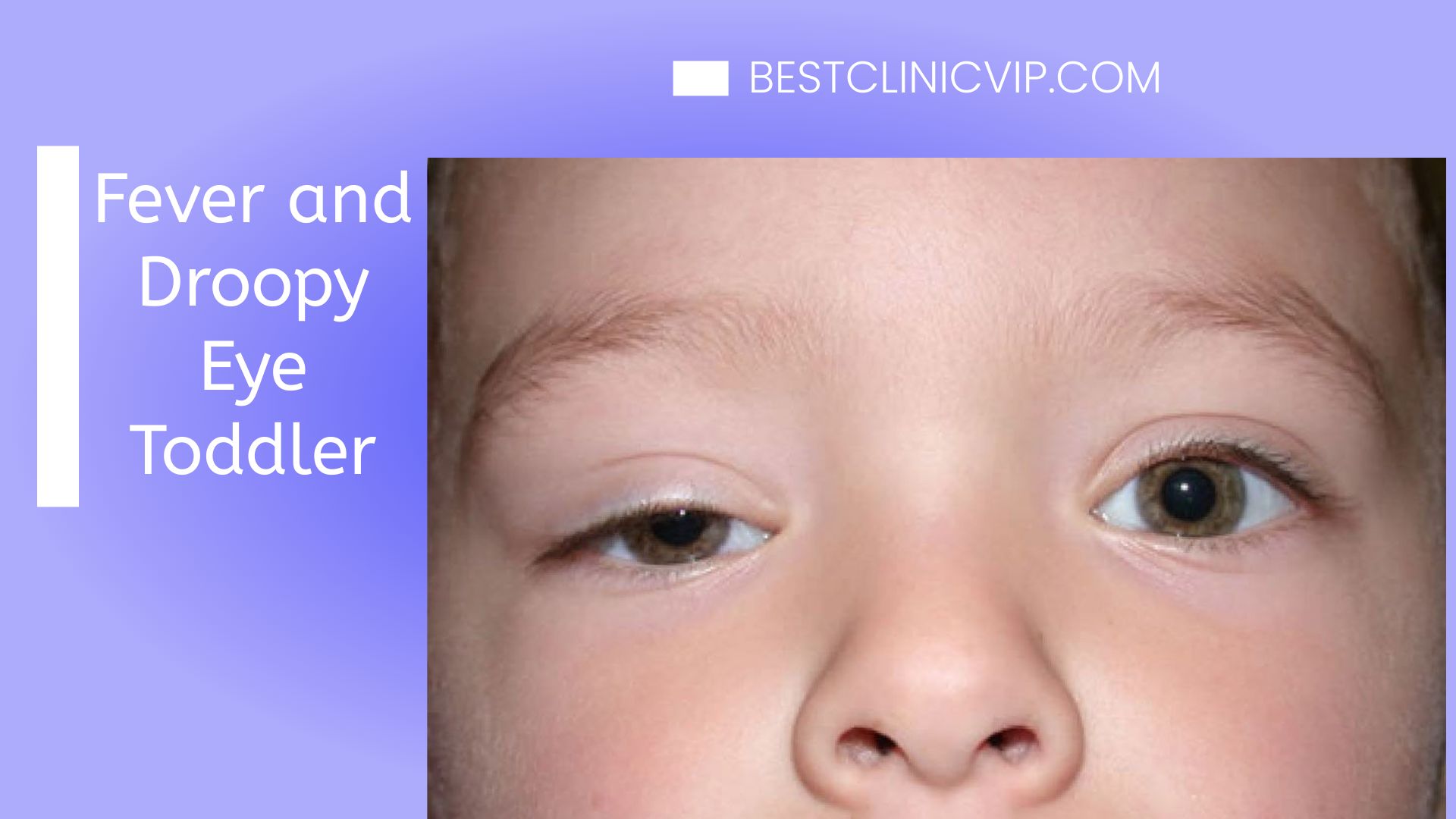

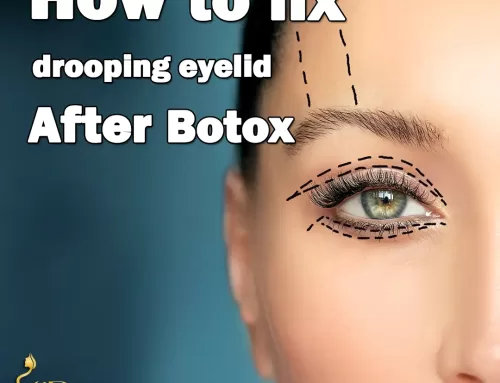

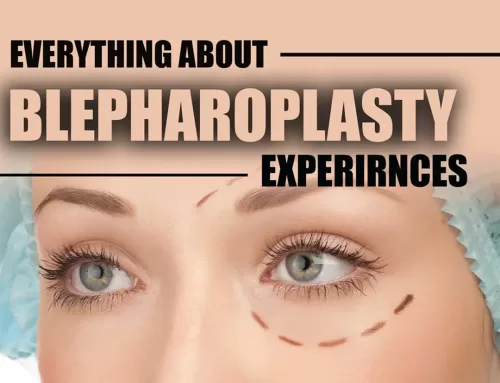
Leave A Comment